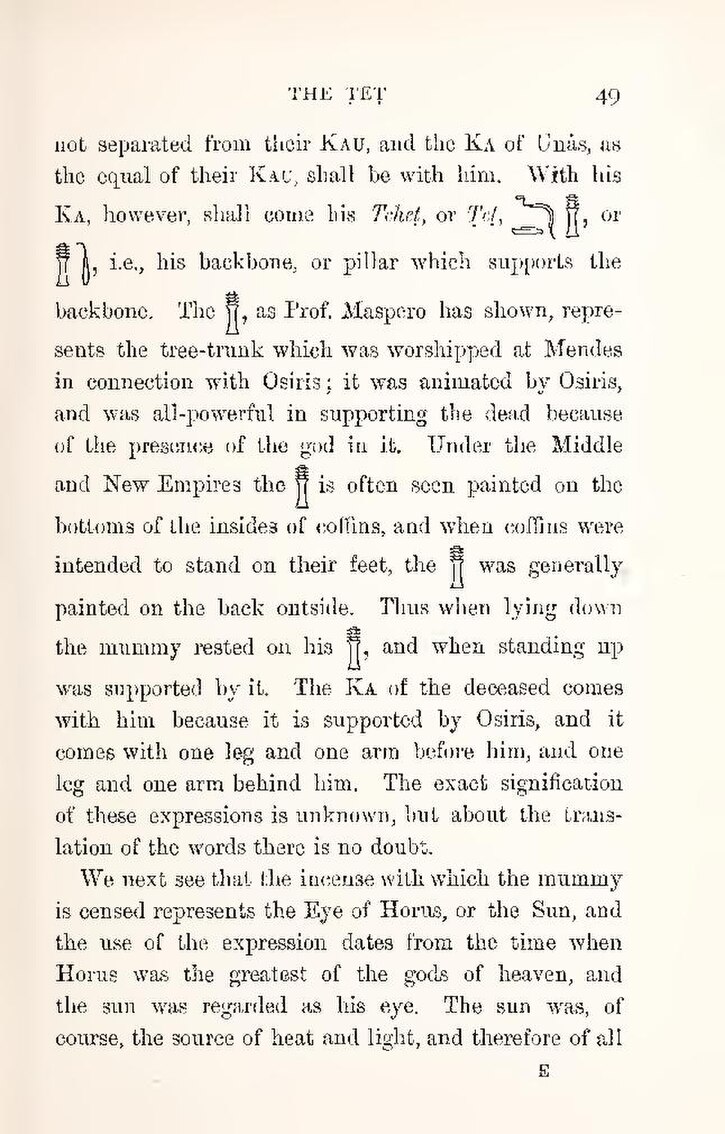not separated from their Kau, and the Ka of Unȧs, as the equal of their Kau, shall be with him. With his Ka, however, shall come his Tcheṭ, or Ṭeṭ,
| |
, or
| |
, i.e., his backbone, or pillar which supports the backbone. The
| |
, as Prof. Maspero has shown, represents the tree-trunk which was worshipped at Mendes in connection with Osiris; it was animated by Osiris, and was all-powerful in supporting the dead because of the presence of the god in it. Under the Middle and and New Empires the
| |
is often seen painted on the bottoms of the insides of coffins, and when coffins were intended to stand on their feet, the
| |
was generally painted on the back outside. Thus when lying down the mummy rested on his
| |
, and when standing up was supported by it. The Ka of the deceased comes with him because it is supported by Osiris, and it comes with one leg and one arm before him, and one leg and one arm behind him. The exact signification of these expressions is unknown, but about the translation of the words there is no doubt.
We next see that the incense with which the mummy is censed represents the Eye of Horus, or the Sun, and the use of the expression dates from the time when Horus was the greatest of the gods of heaven, and the sun was regarded as his eye. The sun was, of course, the source of heat and light, and therefore of all
